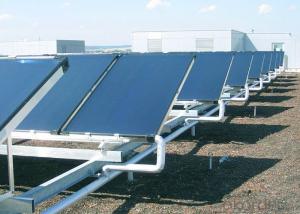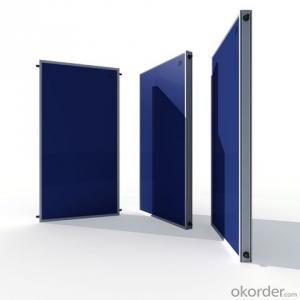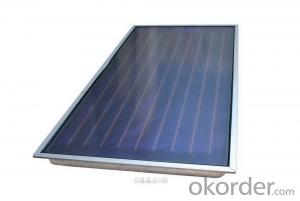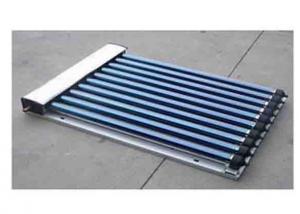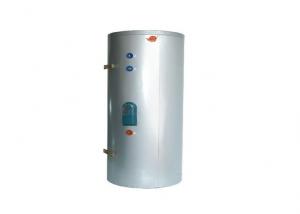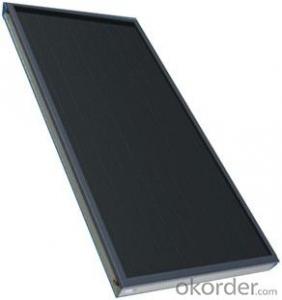CNBM High Effciency Solar Thermal Collector
- Loading Port:
- Shanghai
- Payment Terms:
- TT OR LC
- Min Order Qty:
- 500 pc
- Supply Capability:
- 10000 pc/month
OKorder Service Pledge
OKorder Financial Service
You Might Also Like
Specifications
1.Warm/cold place available
2.50 tubes non pressure
3.Beautiful design
4.Best service and high quality with competive pric
HURRAS SOLAR are professional split and pressurized solar water heater, pressurized solar collector, non-pressurized solar collector for project, domestic solar water heater, solar thermal hot water Manufacture.
Direct flow Vacuum Tube Solar Collector for Project Features:
1 Use high quality evacuated tubes maximize the daily output.
2.Quality 304 stainless steel special for sea side and high air pollution area.
3.stardard food grade 304 2 B stainless steel inner tank with perfect tank design ensure the reliable quality.
4.High density import Polyurethane insulation with a perfect performance of reduce the heat lose of the water tank.
5.Big capacity
Direct flow Vacuum Tube Solar Collector for Project Technical Data :
Max. Work pressure:1.5 bar
Absorption rate > 93%
Max. wind resistance: 17m/s
Max. Hall resistance: 25mm in diameter
Work temperature: -10 C ~ 200 C
Vacuum tube solar collector applications:
1.Hotels, resorts, hospitals and hostels
2.Process industry, boiler feed, laundry and canteens
3.Agricultural sector, hatcheries and dairies
4.Process industry, Boiler feed, Laundry and canteens
5.Agricultural sector, hatcheries, and dairies
6.Swimming pool heating
7.In-process heating
8.Health clubs (Steam / Sauna)
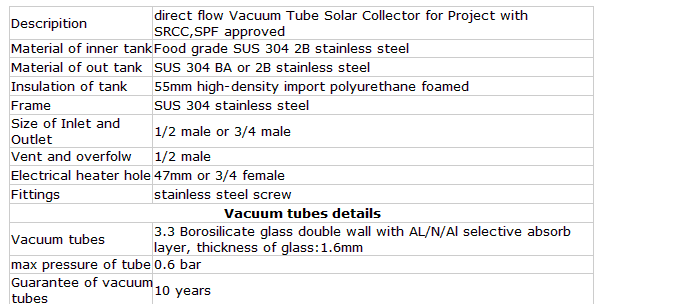
- Q:Are solar collectors suitable for multi-unit buildings?
- Yes, solar collectors are suitable for multi-unit buildings. They can be installed on rooftops or facades of the building to harness solar energy and provide renewable energy to the entire building or individual units. This can help reduce electricity costs and dependence on fossil fuels, making it an environmentally friendly and cost-effective solution for multi-unit buildings.
- Q:Can solar collectors be used in office buildings?
- Yes, solar collectors can be used in office buildings. They can be installed on the roof or integrated into the building's façade to capture sunlight and convert it into usable energy for heating, cooling, or generating electricity. This can help reduce the building's reliance on traditional energy sources and lower its carbon footprint.
- Q:Are there any challenges in integrating solar collectors with existing electrical systems?
- Yes, there are several challenges in integrating solar collectors with existing electrical systems. One major challenge is ensuring compatibility between the voltage and current output of the solar collectors and the existing electrical system. This often requires the installation of additional equipment, such as inverters, to convert the DC output of solar collectors into AC power that can be used by the existing electrical system. Another challenge is optimizing the placement and orientation of the solar collectors to maximize their efficiency and minimize shading or obstructions. Furthermore, integrating solar collectors may require modifications to the existing electrical infrastructure, including wiring, circuit breakers, and meters. Lastly, the integration process often involves complying with local regulations, obtaining necessary permits, and coordinating with utility companies for grid connection. Overall, while integrating solar collectors with existing electrical systems can bring numerous benefits, it requires careful planning and expertise to overcome these challenges.
- Q:What is the impact of wind on the performance of solar collectors?
- The performance of solar collectors can be affected positively or negatively by wind. One advantage is that wind can prevent overheating by cooling the solar collectors. This is especially useful in hot climates where excessive heat can reduce the efficiency of the solar panels. The movement of air caused by wind can dissipate heat and maintain optimal operating temperatures, leading to improved performance and longevity of the solar collectors. On the flip side, strong winds can have a detrimental effect on solar collectors. If the wind speed exceeds a certain limit, it can cause damage to the solar panels or their support structures. This damage can result in loss of functionality and decreased efficiency of the solar collectors. Furthermore, high winds can create turbulence and eddies, disrupting the airflow around the solar collectors. This turbulence can cause uneven distribution of airflow and reduced heat transfer, leading to decreased energy production. Therefore, it is important to consider the potential risks associated with high wind speeds, despite the benefits of wind in cooling the solar collectors. Proper installation and design considerations, such as wind-resistant mounting systems and aerodynamic design features, can help mitigate these negative impacts and ensure optimal performance of solar collectors even in windy conditions.
- Q:Can solar collectors be used in air conditioning?
- Solar collectors have the ability to be utilized in air conditioning systems. By harnessing the sun's energy and converting it into heat, solar thermal panels or evacuated tube collectors can play a crucial role. This heat can then power absorption chillers or heat pumps, which are frequently employed in air conditioning systems. The heat generated by the solar collectors can drive the cooling process, thereby decreasing the dependence on conventional energy sources and promoting a more sustainable and eco-friendly air conditioning system. Furthermore, solar collectors can also pre-heat the ventilation air, reducing the energy requirements of the entire air conditioning system.
- Q:Are solar collectors suitable for commercial use?
- Yes, solar collectors are suitable for commercial use. They can efficiently convert sunlight into usable energy, reducing electricity costs and carbon emissions for businesses. Additionally, advancements in technology have made solar collectors more reliable and cost-effective, making them a viable option for commercial applications.
- Q:Are solar collectors suitable for use in remote areas?
- Yes, solar collectors are highly suitable for use in remote areas. They do not require extensive infrastructure or connection to the electric grid, making them a cost-effective and efficient solution for generating clean energy in isolated locations. Additionally, solar collectors can withstand harsh weather conditions and can be easily transported and installed, making them ideal for remote areas with limited access to traditional energy sources.
- Q:How much space is required for installing solar collectors?
- The amount of space required for installing solar collectors can vary depending on the size and type of the collectors. Typically, for residential installations, a minimum roof space of around 100-200 square feet per collector is recommended. However, it is best to consult with a solar installer to determine the exact space requirements based on your specific needs and the available sunlight in your area.
- Q:How do solar collectors perform in humid climates?
- Solar collectors can still perform effectively in humid climates, although their efficiency may be slightly reduced compared to dry climates. The humidity in the air can affect the rate at which heat is transferred from the collectors to the surrounding environment. However, advancements in solar technology and design have made it possible for collectors to still generate a significant amount of energy even in humid conditions.
- Q:Can solar collectors be used for commercial or industrial purposes?
- Yes, solar collectors can indeed be used for commercial or industrial purposes. They can be installed on rooftops or open spaces of commercial or industrial buildings to harness solar energy and convert it into electricity or heat. This renewable energy source can significantly reduce reliance on traditional energy sources, lower operating costs, and contribute to a sustainable and environmentally friendly business or industrial operation.
1. Manufacturer Overview |
|
|---|---|
| Location | |
| Year Established | |
| Annual Output Value | |
| Main Markets | |
| Company Certifications | |
2. Manufacturer Certificates |
|
|---|---|
| a) Certification Name | |
| Range | |
| Reference | |
| Validity Period | |
3. Manufacturer Capability |
|
|---|---|
| a)Trade Capacity | |
| Nearest Port | |
| Export Percentage | |
| No.of Employees in Trade Department | |
| Language Spoken: | |
| b)Factory Information | |
| Factory Size: | |
| No. of Production Lines | |
| Contract Manufacturing | |
| Product Price Range | |
Send your message to us
CNBM High Effciency Solar Thermal Collector
- Loading Port:
- Shanghai
- Payment Terms:
- TT OR LC
- Min Order Qty:
- 500 pc
- Supply Capability:
- 10000 pc/month
OKorder Service Pledge
OKorder Financial Service
Similar products
New products
Hot products
